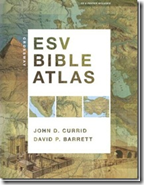Nature has a good article about the collaboration between archaeologists and scientists on an excavation.
Important evidence relating to this debate is being unearthed by a unique collaboration between archaeologists and natural scientists, working shoulder-to-shoulder at Tel Megiddo and several other important Israeli sites. "In the past, all too often, archaeologists and scientists worked together, but it was two parallel lines," says archaeologist Aren Maeir of Bar-Ilan University in Ramat Gan, Israel. It could take months or even years before finds were sent away to the lab, he says, with results taking just as long to come back. "On top of that, sometimes the samples weren’t taken correctly." The Tel Megiddo dig is different. Chemists make up half of the two dozen excavators on the team, which is being led by Finkelstein and Steve Weiner, a structural biologist specializing in mineralized tissues who is director of the Kimmel Center for Archaeological Science at the Weizmann Institute in Rehovot, Israel. Funded by a European Research Council grant worth €3 million (US$4 million) over five years, the pair hope that their work at Tel Megiddo and elsewhere will show that this model of close collaboration should become the norm for archaeology. […] When Nature visited Tel Megiddo in October, excavators were working with brushes, tweezers and teaspoons to gather sediment samples into small plastic vials before taking them to an infrared spectrometer set up on a folding table at the edge of the site. The chemical clues yielded by the spectrometer gave immediate feedback to the diggers as they collected further samples. Chemical analysis can distinguish between soil layers that look identical to the naked eye, explains Weiner. In a paper published this month, for example, he and his colleagues show how infrared spectrometry can reveal the distinctive origins of seemingly identical layers of calcite, a form of calcium carbonate (L. Regev et al. J. Archaeol. Sci. 37, 3022–3029; 2010). Wood burnt at above 500 °C produces calcite, although the mineral can also come from limestone slaked to make lime for construction, and is found in the soil used to make mud bricks. Each type of calcite has a distinctive infrared signature, providing information that helps archaeologists to distinguish between a floor, a wall or a kiln.
The whole article is worth reading.

